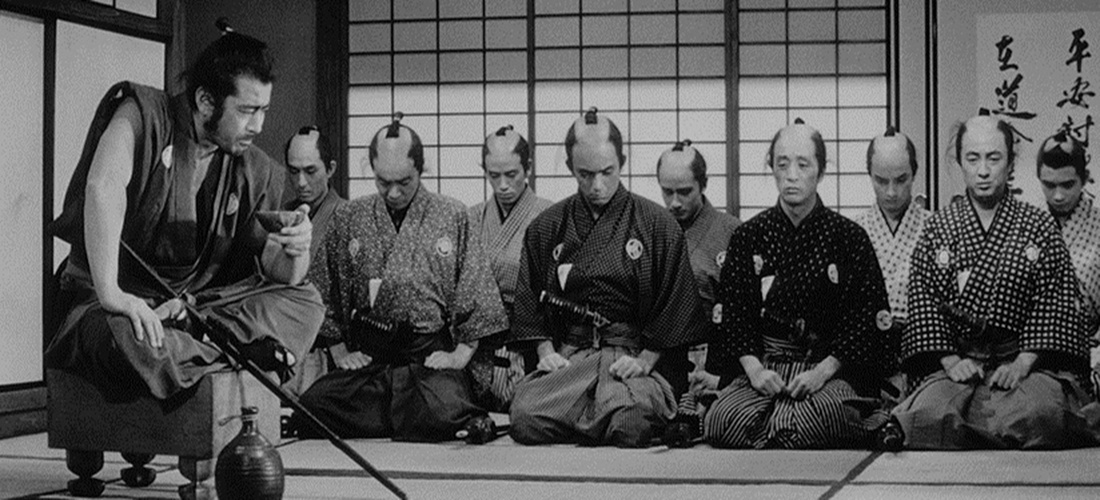
Sanjuro (UK Rating: 12)
Toshiro Mifune was a prolific Japanese actor prominent in the mid '90s. He featured in many samurai movies, most notably Akira Kurosawa's Yojimbo and Sanjuro. As part of the Glasgow Film Festival 2017, many movies featuring Mifune were played, spanning his acting career and ending with a documentary, Toshiro Mifune: The Last Samurai. Sanjuro began as a project called Peaceful Days until Toho, the publisher, asked Kurosawa to make a sequel to Yojimbo. He repurposed the work into Sanjuro and brought Mifune onboard to play the scruffy samurai.The premise is simple: Mifune's character, Sanjuro, accidentally stumbles upon a group of nine young and inexperienced samurai who are in a spot of trouble. They have uncovered a bout of corruption in their clan and set out to stop it with Sanjuro helping them out. Throughout the whole story, Sanjuro protects them from deception and tries to cool down their fiery attitudes. It's a simple plot that's very easy to get into. It offers something for most people and has some great moments throughout.

There is quite a lot of comedy in the story, as well; for example, they capture a prisoner and keep him in the cupboard. This prisoner is then set free by the Lady of the clan who gives him food and clothing. He then makes cameo appearances with phrases like "I couldn't help but eavesdrop" before telling the characters the exact piece of information they need, and then slowly plonking himself back in the cupboard and sliding the door shut. It's a bizarre sense of humour that's very much synonymous with Japan and has made its way into modern Japanese films.
Going in to see a 1960s movie is an odd experience. There are no preconceptions other than it might be awful, like many other movies from that time period. However, the acting on display is fantastic for the most part, sometimes contrived or forced, but fun and slightly cheesy, like a comedy should be. Each character is well rounded and feels 80% genuine, the other 20% being reserved for comedic scenes. The way each character acts represents their social standing among other character traits.
The subtitle timings are also interesting. This older movie assumes a lot more. Far from translating every line, the localisation team left a lot of the agreements, disagreements, and general noises out of the translation. This actually works to the film's benefit as more time can be spent enjoying the movie rather than stuck in the subtitles. It also allows the audience to feel a little bit more clued up, rather than being led through every encounter. In modern subtitling, it's common for simple noises of agreement to be subtitled as "Yes," among other words, which the audience could probably have gleaned from the context in which the sound was made.

While relatively bloodless, Sanjuro makes use of a very novel pressurised fake blood practical effect. It is very impressive considering the black and white visuals. The blood effect was actually a mix of chocolate sauce and pressurised carbonated water to make it explode when the character dies. This point was actually emphasised by the organiser as it was one of the first effects of its kind.
Great - Silver Award


 Sign In
Sign In 26.02.2017
26.02.2017
 Subscribe to this topic
Subscribe to this topic Features
Features





 Top
Top

